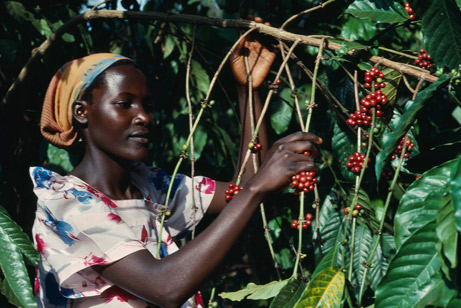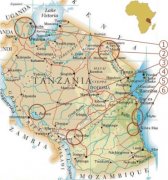East African organic boutique manor coffee beans

When you think of non-coffee, you can imagine that it grows in a polluted natural environment. It is well known that the coffee here has a natural aroma of flowers and fruit, has a very clear degree of discrimination, and is also a characteristic given by nature.
Nowadays, coffee drinking has also formed an M-type of coffee, and African countries are the county-level coffee producing areas most supported by industrial countries. This one is worth promoting, such as Prondi, Lavi, Geely, Yisobi, Kenyon. Etc., coffee made in at least five countries has a thick taste and special fragrance. It tastes like being in a comfortable forest in Africa, with the taste of wild, unrestrained and natural.
Coffee features:
The coffee produced by Pulondi has a wild characteristic, especially a bit like Ken's coffee. I think it has a strong floral aroma and a clear return to sweetness. The only deficiency is that it does not last long.
The soil of the growing environment, which is planted at high elevations, provides the right acidity to remove any damage to coffee. Because it is less contaminated by artificial chemicals, it can retain the aroma and flavor of natural coffee.
Located in Mount Jili, Tanzania, with a height of 3,000 to 6,000 feet, it is the most suitable area for growing coffee. It is rich and refreshing, low in acidity, balanced in taste and rich in fragrance.
Yisuo is smaller than oyster, and its size is different. It is characterized by sour wine, heavy taste, slippery with light fruit aroma, and rich balance.
Ken has special, bright and sour fruit. The common taste of Ken is not thick, but it is as bright and fruity as fruit, some spicy and some liqueur.
Roasted Hot Hou: Full City Roast
The cooking method of steamed rice: American style / siphon / bubble / mocha / Italian style
Promotional products: iced coffee / coffee cappuccino / coffee / fancy coffee (both cold and cold). Wait.
Acidity
Acidity
Body
Alcohol degree
Aroma
Fragrant peach
Bitter
Bitter taste
Sweet
Fragrant and sweet
Shop owner's comparison
(strength 1 to 5)
one
three
four
one
three

The bitterness referred to here is different from bitterness or Sour, and it has nothing to do with acid value. instead, it is a fresh and lively feature that promotes the development of coffee to boost the mind and refresh the taste. It is the sour and strong characteristic of all the coffee that grew up on the plateau.

Aroma is usually unique and compatible. The flavors used to describe Aroma include: caramel, carbon roast, chocolate, fruit, grass, bud, lush, rich, spicy and so on. Aroma refers to the smell and aroma of coffee after the cooking is finished.

The mellowness can be classified as light as water to light, medium, high, fat, and even as thick as sugar. Other references describe the subject. It is the taste of the coffee in the tongue after the finished coffee is used.

The bitterness of dark baking is deliberately created, but the most common cause of bitterness is too much coffee powder and too little water. Bitterness is not a consent word for Sour. Bitterness is a basic taste, and the sensory area is located at the base of the tongue.

It is a commonly used description, which is similar to the taste of fruit and has something to do with the taste of wine.
Important Notice :
前街咖啡 FrontStreet Coffee has moved to new addredd:
FrontStreet Coffee Address: 315,Donghua East Road,GuangZhou
Tel:020 38364473
- Prev

Puerto Rico Boutique Manor Coffee Bean-Romantic Goddess Coffee
Located in the Caribbean climate, island-type alpine soil advantage planting, is the favorite of European royal aristocrats, full particles, flavor are sufficient, aromatic, and Jamaica Blue Mountain and Hawaii Kona beans, famous in the coffee world. Acidity Body Alcohol Aroma Bitter Sweet Store Rating (Intensity 1~5) 5 4 3 2 1 Customers can choose from
- Next

Winnie Tanzania Lubu coffee beans
Venetian Tanzania Lubu Coffee Bean Coffee growing area: African Coffee species: medium concentration Coffee description: refreshing acidity and medium mellow complement blackcurrant and sweet orange flavors processing method: washing with flavors: blackcurrant, orange and lemon-like coffee: Kenyan coffee comes from the rich soil of the East African Rift Valley and is from this region.
Related
- Guji coffee producing area of Guji, Ethiopia: Humbela, Shakiso, Wulaga
- What is the most expensive variety of Qiloso in BOP multi-variety group?
- How to store the coffee beans bought home?
- Why are Yemeni coffee beans so rare now?
- Ethiopian Sidamo all Red Fruit Sun Sun Santa Vini Coffee beans
- SOE is mostly sour? What does it mean? Is it a single bean? what's the difference between it and Italian blending?
- Is Italian coffee beans suitable for making hand-brewed coffee?
- How to choose coffee beans when making cold coffee? What kind of coffee beans are suitable for making cold coffee?
- Just entered the pit to make coffee, what kind of coffee beans should be chosen?
- Can only Japan buy real Blue Mountain Coffee? What are authentic Jamaican Blue Mountain coffee beans?

